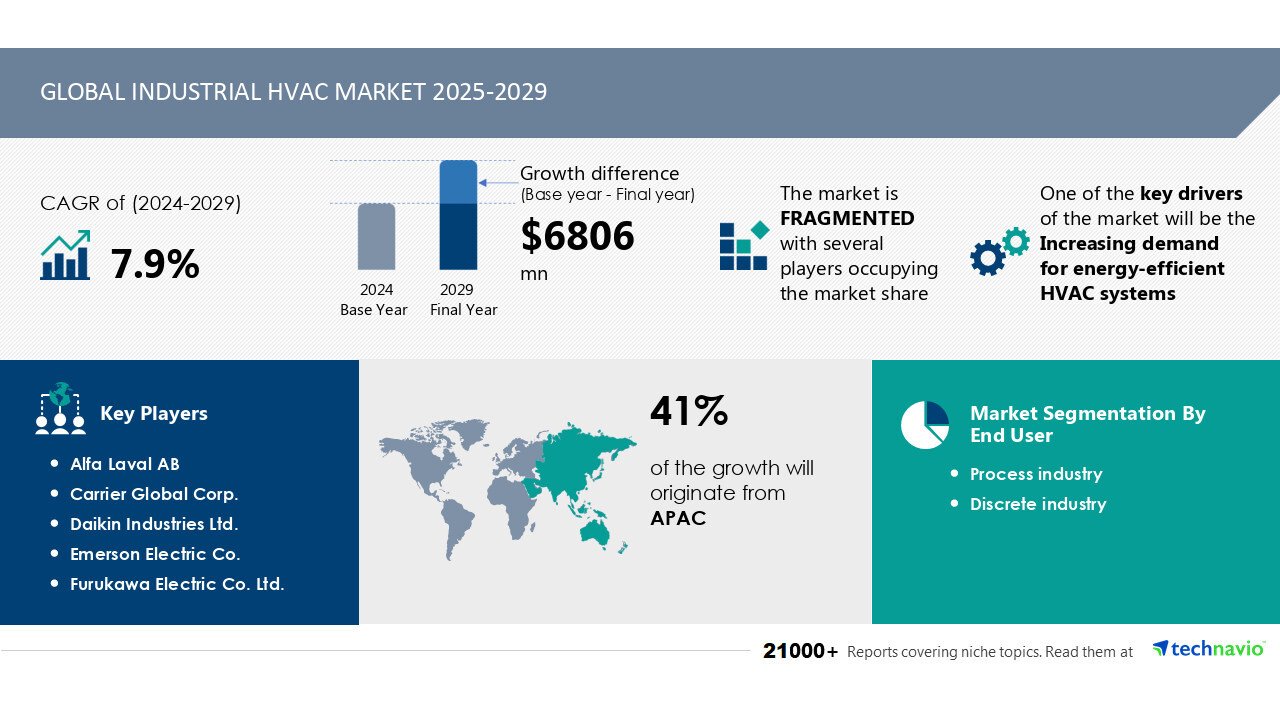The global industrial HVAC market is projected to expand significantly, with an estimated increase of USD 6.81 billion from 2025 to 2029, according to a recent report by Technavio. This represents a compound annual growth rate (CAGR) of 7.9% over the forecast period.
Key Market Drivers
The demand for energy-efficient HVAC systems is one of the primary factors driving market growth. Industries are increasingly focused on reducing energy consumption and adhering to environmental sustainability standards. The adoption of advanced refrigerants and integration of IoT technologies in HVAC systems are also significant trends influencing the market.
Artificial intelligence and IoT integration allow for enhanced system monitoring, improving energy efficiency and lowering maintenance costs. Additionally, stringent regulatory requirements regarding energy efficiency and safety standards are prompting industries to upgrade their HVAC infrastructure.
Segment Insights
- End-User Segments: The process industry, including sectors such as oil and gas, pharmaceuticals, and food and beverages, dominates the industrial HVAC market. This sector is driven by the need for energy-efficient solutions and explosion-proof HVAC systems, particularly in hazardous environments.
- Geographical Growth: The Asia-Pacific (APAC) region is expected to contribute 41% of the market growth, led by countries like China, India, and Japan. Rapid industrialization, urbanization, and population growth in these nations are key contributors.
Regional Outlook
The APAC region leads due to its strong industrial base and increasing investments in sectors such as food and beverages. North America and Europe are also expected to witness significant growth, driven by technological advancements and regulatory mandates.
Key Players
The report identifies 20 leading companies shaping the industrial HVAC market, including:
- Carrier Global Corp.
- Daikin Industries Ltd.
- Emerson Electric Co.
- Honeywell International Inc.
- Johnson Controls International Plc
These companies are focusing on innovations such as smart HVAC systems, sustainable refrigerants, and energy-efficient components to address the evolving needs of industries.
Future Outlook
The industrial HVAC market is poised for robust growth, supported by technological advancements, increased awareness of energy efficiency, and the rising adoption of sustainable building solutions. The shift toward IoT-enabled systems and the need for compliance with updated regulations will further accelerate this growth trajectory.
Conclusion
With a strong CAGR of 7.9% forecasted until 2029, the global industrial HVAC market offers significant opportunities for stakeholders. Innovations and regional expansions will continue to shape the competitive landscape, meeting the demands of industries prioritizing efficiency, safety, and environmental sustainability.
